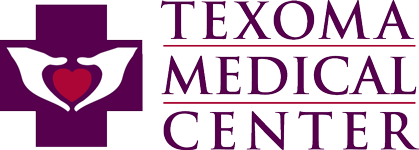The Relief of CPAP Without the Bothersome Mask
 September 27, 2022
September 27, 2022
Sleep apnea is a common condition in which a person’s breathing repeatedly stops and starts while they sleep due to an airway obstruction. Though often considered a nuisance more than anything, it is a serious condition that can cause more than the loss of a good night’s rest. Left untreated, it can lead to heart failure, hypertension, stroke and other life-threatening problems.
A frequently used treatment for sleep apnea is the continuous positive airway pressure (CPAP) machine, which applies mild air pressure to keep the airway open during sleep. Despite being considered the most effective sleep apnea treatment, many people find CPAP machines, especially the mask through which it delivers air, to be uncomfortable.
Luckily for those people, there is a new, less-cumbersome treatment for sleep apnea, and it is offered at Texoma Medical Center by Peter A. Selz, MD, an ENT physician. Inspire is a small, surgically implanted device that stimulates a nerve in the tongue to push forward during sleep, opening the throat passage to allow for easier breathing. Unlike CPAP, it does not require the user to wear an uncomfortable mask or bring a shoebox-sized machine wherever they sleep.
Meeting the Criteria
A person needs to meet certain criteria to be deemed eligible for Inspire. They must have sleep apnea and have tried CPAP, and their BMI must be below a certain level that varies by insurance provider. Medicare requires a BMI less than 35, while some insurances require it be less than 32.
If a person meets these criteria, they undergo a drug-induced sleep endoscopy to have their airway examined. “The sleep apnea must be of a certain level, not too mild or severe,” explains Dr. Selz. “If the blockage is caused by their tongue collapsing backward during sleep, they are a good candidate. If the throat walls do most of the collapsing, they are not.”
This process typically takes six to eight weeks, and the candidate must have a sleep study done if their most recent one was not conducted in the past two years.
Implanting the Device
“The implantation surgery takes about 1 and a half to 2 hours,” Dr. Selz says. “We first make an incision under the jawline to put an electrode around the tongue nerve, and then we run a wire from it to a pacemaker-like battery pack that is implanted in the chest.” Because the procedure is done in an outpatient setting, it does not require an overnight stay.
The device is not immediately activated. The patient returns two weeks after the procedure to make sure the incisions have healed and there is no infection. After another two weeks, it is activated. They return once more after two or three months so the sleep technicians can make sure the device is operating correctly.
Using the Device
Once their Inspire device is activated, the patient is given a remote that turns it on. There is a 30-minute delay from when it is turned on so the patient can fall asleep before it starts to stimulate their tongue nerve.
Dr. Selz, who has implanted seven Inspire devices since TMC began offering it two months ago, says it is worthwhile for anyone who suffers from sleep apnea. “It needs to be taken care of before it leads to more serious issues, and we’re fortunate to have this treatment option,” he says. “TMC’s sleep lab has very good technicians, and they offer quality testing to determine if someone needs treatment for a sleep health condition.”
